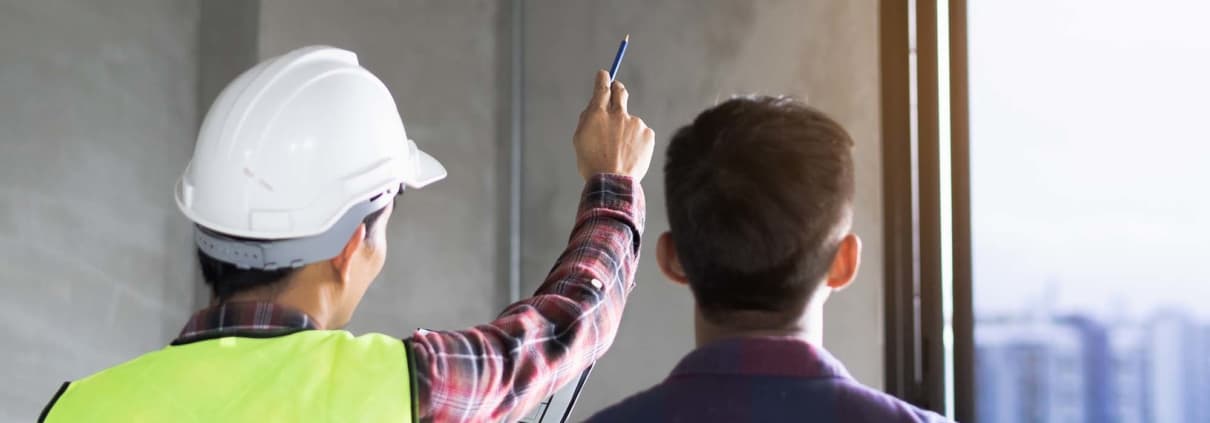After a merger between the American Society of Heating and Air Conditioning Engineers (ASHAE) and the American Society of Refrigerating Engineers (ASRE), ASHRAE was created. Founded in 1894, this group’s purpose is to advance human well-being through sustainable technology for buildings. They focus primarily on building systems, energy efficiency, indoor air quality, refrigeration, and sustainability.
In early 2020, ASHRAE formed an epidemic task force in response to the emergence of COVID-19. The team was created to address the challenges of the current pandemic and future epidemics in relation to the impact HVACs have on the transmission of diseases. This task force has introduced new standards for how your building should operate post-epidemic.
They also provided a helpful recommendation checklist to help reduce infectious aerosol exposure that you can find here.
Building Assessment
Building readiness refers to the practical information and checklists that define how a building should be operating and how to check its operation. The ASHRAE Epidemic Task Force has updated its building readiness guide to help mitigate the transmission of diseases. Here’s everything you need to know about reopening your business prior to the end of an epidemic or pandemic.
Post-Epidemic Conditions in Place
There are two building readiness modes: the Epidemic Conditions in Place (ECiP) and the Post-Epidemic Conditions in Place (PECiP). For this blog, we’re focusing solely on the PECiP mode. This mode details actions that should be done before occupying a building that has been shut down since the beginning of an epidemic or pandemic. It also touches on continued operation for after the building has been made ready for occupancy.
PECiP: Prior to Occupancy
Before you can get back to work, it’s necessary to get the building ready for occupants. What needs to be done depends on the threat level of exposure and also the type of facility you’re planning to reopen. However, there are general recommendations you follow as well. General recommendations suggest the following:
- Create a strategic plan that includes measures that make employees feel safer, ensures supply chain for critical items, reviews contractual agreements, establishes a protocol, and provides training.
- Notify occupants when the building is planned to open.
- Follow local, state, and federal executive orders, regulations, guidelines, and more.
- Follow the Centers for Disease Control and Prevention (CDC) advice on PPE usage.
- Follow Occupational Safety and Health Administration (OSHA) guidelines.
- Follow proper cleaning procedures based on the Environmental Protection Agency (EPA) and CDC guidance.
- Review the building automation system programming so they align with the operational consideration requirements.
- Install signs to encourage occupants to use a revolving door, rather than opening swing doors in the lobby area.
- Find areas where touchless interactions can be done and apply them (e.g. touchless faucets).
- Use an expert to verify sensor calibration for demand-based ventilation, airflow measurement, and temperature control.
- Hire a mechanical service company to inspect and assess the capabilities of all mechanical equipment (e.g. water heaters, boilers, pumps, and chillers).
- Consider future renovations that could help minimize transmission of viruses.
PECiP: After Occupied
Once measures to prepare the building have been completed, you can then focus on what it would take to get your building back to normal. You should ask important questions like, did your building miss any preventative maintenance periods while unoccupied? Try to think about anything that may affect how your equipment operates. This can help you create a plan to get your systems back to where they need to be.
PECiP: Building Maintenance Program and Systems Manual
Finally, it’s time to take a look at your maintenance program and systems manual. First, review your existing maintenance program and determine your priorities.
- Are there systems that need to be put at a higher priority now than before the pandemic?
- Is there equipment that has more issues now than pre-pandemic?
- If you are doing annual or semi-annual inspections and maintenance, is it worth having more frequent maintenance intervals?
The next step is to take a look at your systems manual. If the order of operations changed during the pandemic, take note of the new sequence of operations. Staff can then review the occupied vs unoccupied operations to ensure that the document is current.
Make Sure Your Building Is Ready
If you’re unsure of the readiness of your building, let the professionals at A&G Services help. We are the premier mechanical services provider in Fort Worth, Texas. Our team can perform a building assessment on your behalf to ensure everything is working as it should. If something is wrong, we can begin work right away so there’s minimal disruption.
Contact us today to learn more about our services.




